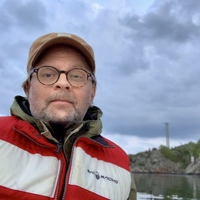Lars Hermanson
University of Gothenburg, Dept of historical studies, Faculty Member
- Professoredit
Research Interests:
Research Interests:
Research Interests:
Research Interests:
Research Interests:
Research Interests:
Research Interests:
Research Interests:
Denna artikel behandlar med utgangspunkt i anfallet pa Kungahalla ar 1135, de sociopolitiska forhalladena inom nordeuropas elitskikt, 1123-1135.
Research Interests:
Ett annat 1100-tal. Individ, kollektiv och kulturella monster i medeltidens Danmark : “Makten, individen och kollektivet. Ett alternativt perspektiv pa det danska 1100-talets politiska historia”,
Research Interests:
Research Interests:
Decolonizing The Viking Age 1 och Death Rituals in South-East Scandinavia AD 800–1000. Decolonizing the Viking Age
Research Interests:
Saxo and the Baltic : Danish Baltic-sea Policies at the end of King Niels’ reign, 1128-1134. Foreign policy or Domestic Affairs?”,
Research Interests:
... Lars Hermanson behandlar i sin avhandling frågan om hur medeltidens människor gick tillväga för att bli medlemmar av detta politiska toppskikt. I 1100-talets Norden brukades endast i begränsad utsträckning institutionella medel för... more
... Lars Hermanson behandlar i sin avhandling frågan om hur medeltidens människor gick tillväga för att bli medlemmar av detta politiska toppskikt. I 1100-talets Norden brukades endast i begränsad utsträckning institutionella medel för maktutövning. ...
Research Interests:
Research Interests:
Research Interests:
Danish Lords and Slavonic rulers : The Elite’s Political Culture in Early Twelfth-Century Baltic
Research Interests:
Research Interests:
Research Interests:
Research Interests:
Research Interests:
Research Interests:
Research Interests:
Research Interests:
Research Interests:
... Lars Hermanson behandlar i sin avhandling frågan om hur medeltidens människor gick tillväga för att bli medlemmar av detta politiska toppskikt. I 1100-talets Norden brukades endast i begränsad utsträckning institutionella medel för... more
... Lars Hermanson behandlar i sin avhandling frågan om hur medeltidens människor gick tillväga för att bli medlemmar av detta politiska toppskikt. I 1100-talets Norden brukades endast i begränsad utsträckning institutionella medel för maktutövning. ...
